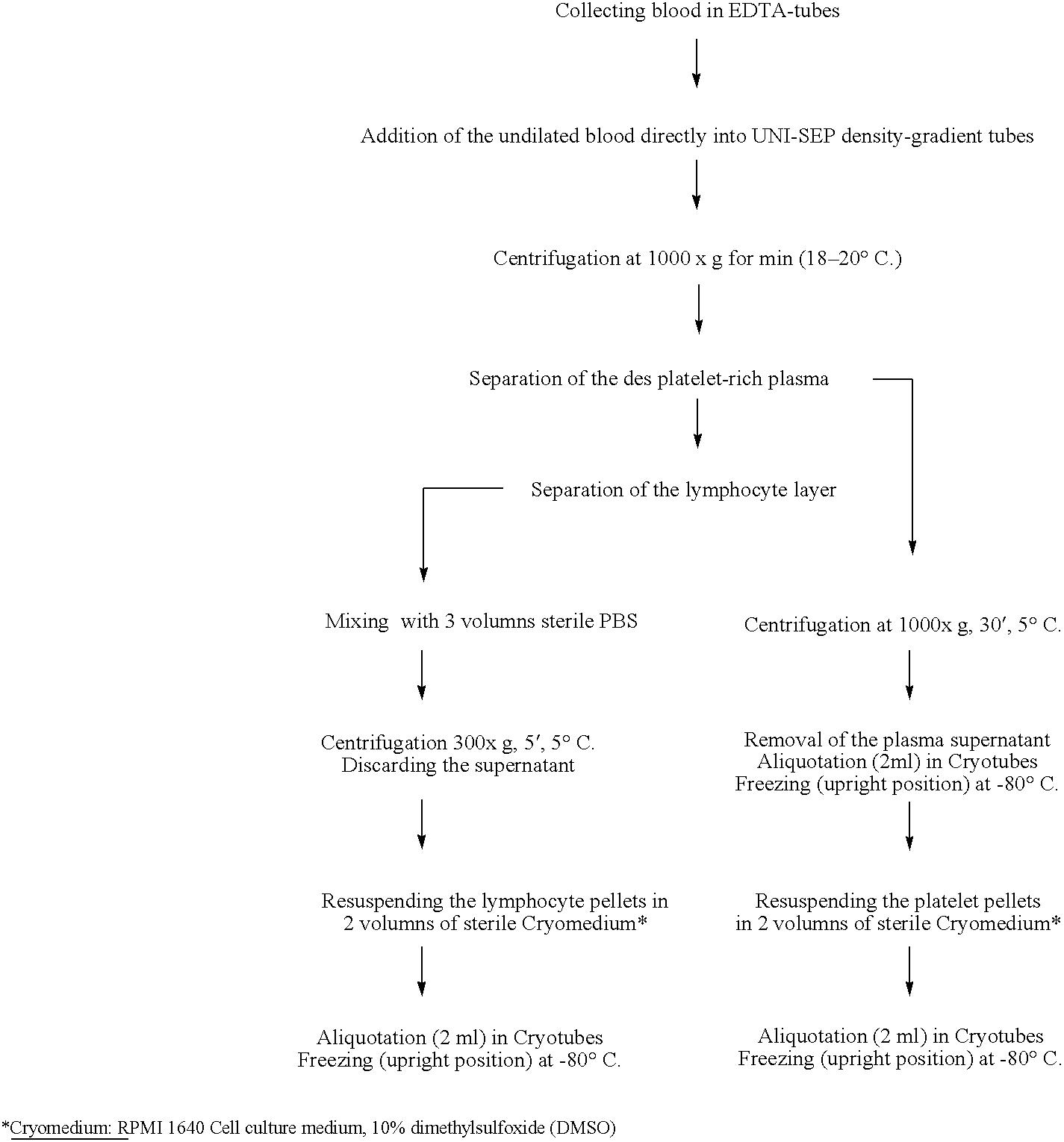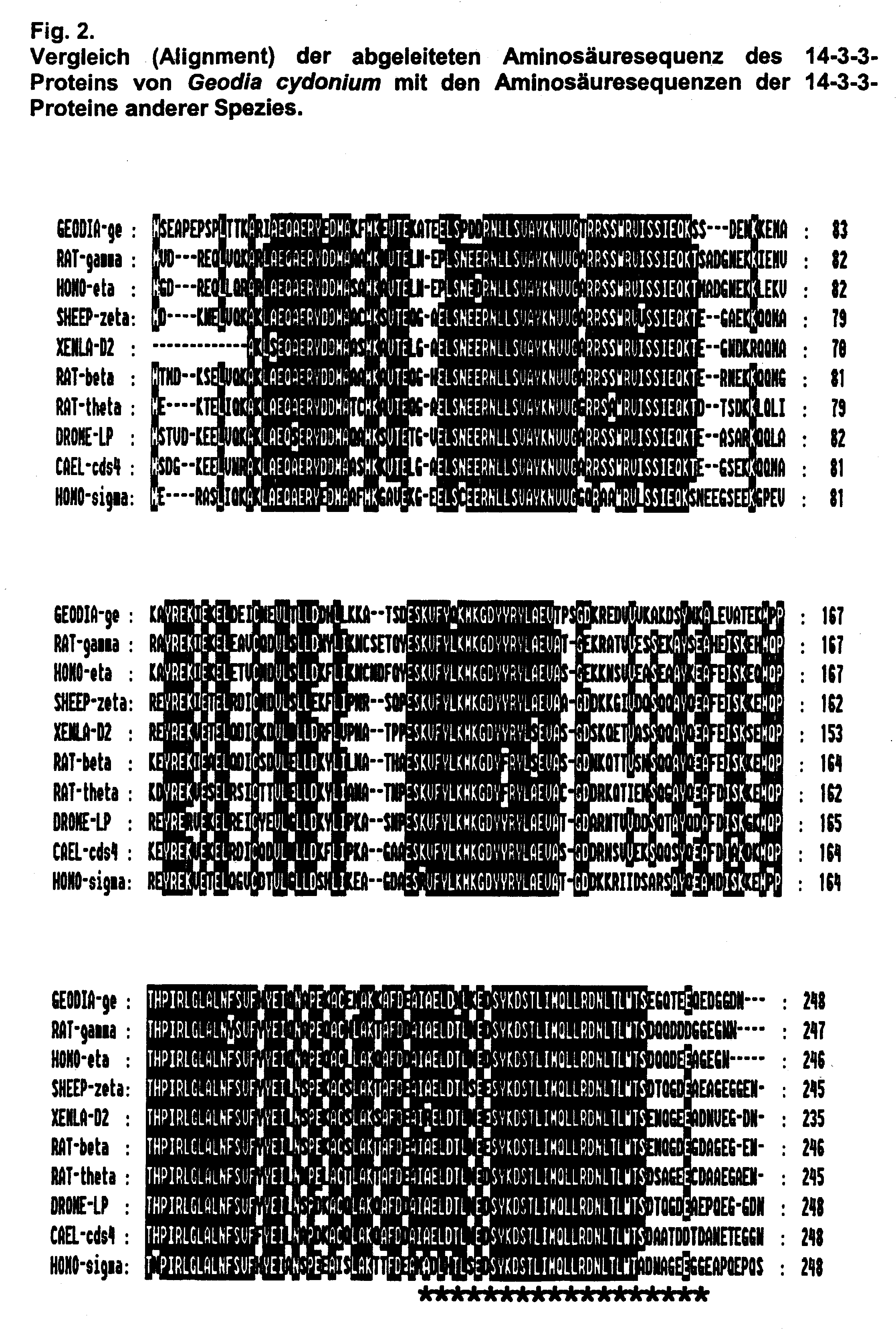Use of 14-3-3 proteins and a method for determining the same in the fluids or tissues of organisms
a technology applied in the field of use of 1433 proteins and a method for determining the same, can solve the problems of insufficient detection methods of pcbs in invertebrates, and achieve the effect of avoiding or reducing the disadvantages of the currently used methods
- Summary
- Abstract
- Description
- Claims
- Application Information
AI Technical Summary
Benefits of technology
Problems solved by technology
Method used
Image
Examples
example 1
Utilisation of 14-3-3 Proteins as a Biomarker for PCB: Detection by Means of Northern- and Western-Blotting
[0088] The 14-3-3-cDNA from the sea sponge Geodia cydonium was used as a gene probe for the detection of expression of the 14-3-3 proteins on the mRNA-level and the respective antibodies were used for determining the amount of protein. In the accomplished keeping experiments, PCB 118 was used as the model PCB.
Realisation
[0089] (a) Exposition of G. cydonium towards PCB118:
[0090] 1 ml of PCB118 (0.1 mg / ml in corn oil) were injected in 40 g sponge tissue. The samples were incubated in sea water for up to 6 days in 20 l aquariums at 17.degree. C. with continuous aeration; the water was exchanged one time at day 2. Aliquot portions of the tissue (each about 200 mg) were withdrawn at the time zero or after an incubation period of 0.5; 1; 3; 5 and 6 days. These aliquot portions were immediately frozen in liquid nitrogen and stored at a temperature of -80.degree. C.
[0091] (b) Extractio...
example 2
Use of 14-3-3 Proteins As a Biomarker for (Xeno)estrogens: Detection by Northern Blotting
[0095] It could be shown by Northern Blotting, that both PCB and 17.beta.-oestradiol strongly induce the expression of 14-3-3 in lower invertebrates (FIG. 4). Moreover, it was successfully shown, that an exponentiation of the expression of 14-3-3 protein mRNA sets in, when both substances are combined. In the absence of both agents, the 14-3-3 protein mRNA is not able to be detected. Whereas the level of the 14-3-3 protein mRNA was 30% when PCB118 is applied, and 100% (reference value) when 17.beta.-oestradiol was applied, both chemicals together induced the expression of 14-3-3 protein at a value of 550%. The induction terminates after 3 days.
[0096] Detection of the Expression of 14-3-3 Proteins by Means of ELISA Methods ("14-3-3 Protein Capture Assay")
[0097] Preparation of the ELISA Microtiter Plates
[0098] 14-3-3 protein is a protein, which specifically binds to phosphoserine; a 14-3-3 protein...
example 3
Quantification of 14-3-3 Proteins in Dabs after Exposition Towards PCBs and Cadmium. Detection by Means of the ELISA Method (14-3-3 Protein Capture Assay)
[0120] The amounts of PCB77, PCB 118 and PCB 153 given in table 1 were dissolved in corn oil and then injected into dabs (dabfish, Limanda limanda). The injection of the listed amounts of cadmium (see table 2) were injected as a solution in PBS. After the given periods, the liver was withdrawn from the animals and immediately frozen. The amount of 14-3-3 proteins in the livers was determined in a 3-fold volume of phosphate buffer with 1 mM EDTA and 1 mM of phenylmethylsulfonyl fluoride after the frozen tissue samples had been homogenised by the using a mortar.
1TABLE 1 Injection [i.p.] of 0.03 mg PCB per kg of Limanda limanda (dab, dabfish). After 5 days, the livers were withdrawn and the amount of 14-3-3 protein determined by means of the described ELISA. The optical densities are given in OD units. 14-3-3 protein Compound: (OD uni...
PUM
| Property | Measurement | Unit |
|---|---|---|
| wet weight | aaaaa | aaaaa |
| concentration | aaaaa | aaaaa |
| temperature | aaaaa | aaaaa |
Abstract
Description
Claims
Application Information
 Login to View More
Login to View More - R&D
- Intellectual Property
- Life Sciences
- Materials
- Tech Scout
- Unparalleled Data Quality
- Higher Quality Content
- 60% Fewer Hallucinations
Browse by: Latest US Patents, China's latest patents, Technical Efficacy Thesaurus, Application Domain, Technology Topic, Popular Technical Reports.
© 2025 PatSnap. All rights reserved.Legal|Privacy policy|Modern Slavery Act Transparency Statement|Sitemap|About US| Contact US: help@patsnap.com



